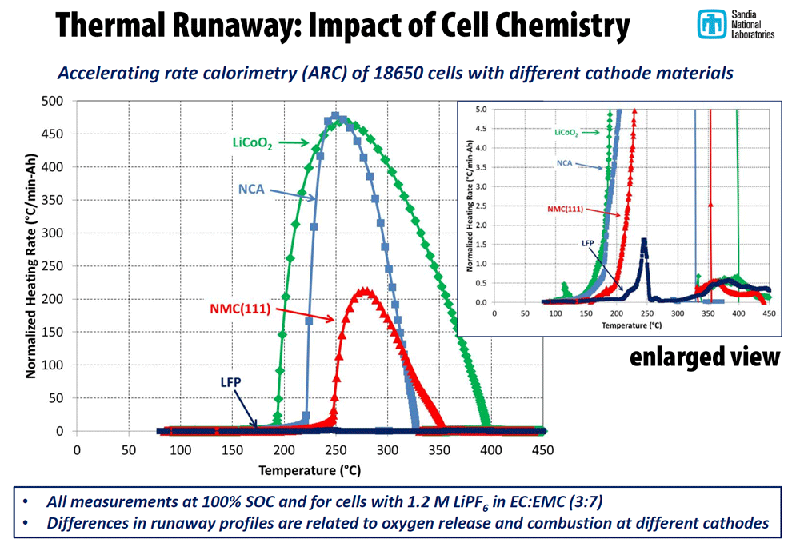One of the main causes of danger for lithium-ion cells is related to the phenomenon of thermal runaway. This is a healing reaction of the battery in use, caused by the nature of the materials used in the chemistry of the battery.
Thermal runaway is mainly caused by the solicitation of batteries under specific conditions, such as overload under adverse climatic conditions. The result of a thermal runaway of a cell depends on its level of charge and can lead in the worst case to inflammation or even an explosion of the lifepo4 battery.
However, not all types of Li-ion technology, due to their chemical composition, have the same sensitivity to this phenomenon.
The figure below shows the energy produced during an artificially induced thermal runaway

It can be seen that among the Lithium-Ion technologies mentioned above, LCO and NCA are the most dangerous chemicals from a thermal runaway point of view with a temperature rise of about 470°C per minute.
The NMC chemistry emits about half the energy, with an increase of 200°C per minute, but this level of energy causes in all cases the internal combustion of materials and the ignition of the cell.
In addition, it can be seen that LiFePO4 – LFP technology is is slightly subject to thermal runaway phenomena, with a temperature rise of barely 1.5°C per minute.
With this very low level of energy released, the thermal runaway of the Lithium Iron Phosphate technology is intrinsically impossible in normal operation, and even almost impossible to artificially trigger.
Combined with a BMS, Lithium Iron Phosphate (LifePO4 – LFP) is currently the most secure Lithium-Ion technology on the market.
*This article is from internet, does not represent the views of this site, if there is any infringement, please contact to delete.
หมวดหมู่
ล่าสุด โพสต์
สแกนไปที่ WeChat:everexceed
